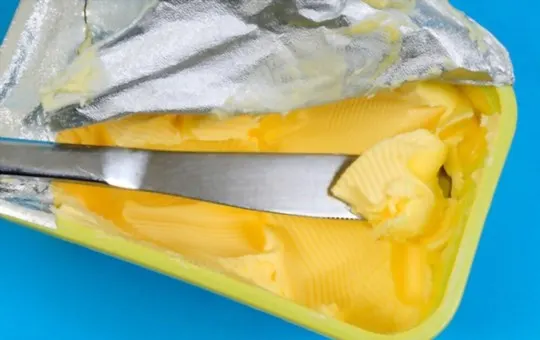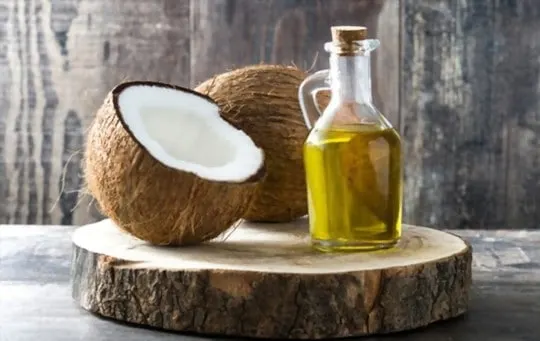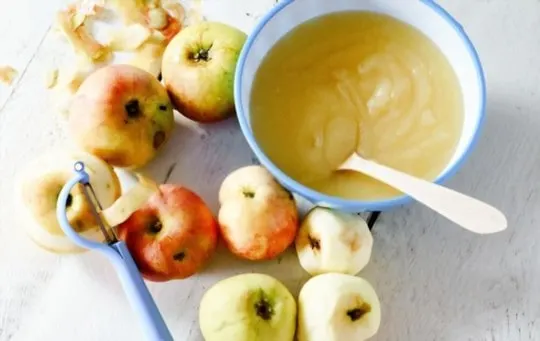Have you ever wanted to make sugar cookies but realized you are out of butter?
If so, don’t worry because there are plenty of substitutes that can be just as tasty and delicious than using butter in sugar cookies.
Many people have started to look for alternatives such as oil or applesauce to achieve the same consistency as using butter.
Additionally, these ingredients can add special flavor to your sugar cookie treats.
So, let’s explore how you can use different substitutes for butter in sugar cookies and what the best options are.
What Does Adding Butter to Sugar Cookies Do?

Adding butter to sugar cookies can be an essential step in creating the desired taste and texture.
When used correctly, butter can add a richness to your cookie that enhances its flavor and makes for a unique baking experience.
Unsurprisingly, adding butter to sugar cookies also affects their texture – it helps them hold together better and become more tender when cooked.
This process also makes the dough very malleable so you can roll it out or shape it into whatever form desired.
Ultimately, adding butter to sugar cookies is a simple yet impactful technique that imparts a subtle flavor and fluffy texture.
To use it, begin by mixing softened butter with your dry ingredients until you achieve a crumbly consistency and then slowly add wet ingredients until the dough comes together easily.
Finally bake as instructed in your recipe – you’ll be amazed at the end result.
The 5 BEST Substitutes for Butter in Sugar Cookies
Traditional sugar cookie recipes often call for butter, which provides a rich flavor.
However, if you’re looking for a vegan or dairy-free alternative, there are plenty of substitutes that can be used in sugar cookie recipes.
Here’s a detailed comparison of the 5 best substitutes for butter in sugar cookies, along with their key characteristics and proper ratios:
| Substitute | Key Characteristics | Proper Ratio |
|---|---|---|
| Margarine | Similar texture and flavor to butter but with a higher water content. It can affect the texture of cookies. | Use the same amount as butter |
| Shortening | Provides a soft and tender texture to cookies. It lacks the flavor of butter but helps cookies hold their shape. | Use 1 cup + 2 tablespoons of shortening for every 1 cup of butter |
| Olive & Vegetable Oil | Can yield softer and moister cookies. Olive oil adds a distinct flavor, while vegetable oil has a neutral taste. | Use 3/4 cup of oil for every 1 cup of butter |
| Coconut Oil | Adds a subtle coconut flavor to cookies and provides a similar texture to butter. | Use the same amount as butter |
| Applesauce | Reduces the fat content and adds moisture to cookies. It can result in softer and cake-like cookies. | Use 1 cup of applesauce for every 1 cup of butter |
Now let’s explore each substitute in more detail:
1 – Margarine

Margarine is a popular substitute for butter in sugar cookie recipes.
It produces a sweet, tender and moist cookie.
The downside is that it does not have the same buttery flavor that butter provides.
In addition, it is high in trans fat, so make sure you use a product low in trans fat or one that lists “0” trans fatty acids per serving.
Additionally, verify that the margarine you are using contains some form of saturated fat since this will help to ensure a more tender cookie.
2 – Shortening

Using shortening makes the sugar cookie dough more malleable so that you can roll it out and cut into shapes with cookie cutters.
The result is slightly flaky, crumbly cookies that are crunchier than those with butter.
When using shortening as a substitute for butter in sugar cookies, you should use 3/4 cup of shortening for each one cup of butter required in the recipe.
Remember to soften the shortening first by allowing it to sit at room temperature for at least 30 minutes before mixing it into your dough.
3 – Olive & Vegetable Oil

Using olive oil and vegetable oil in place of butter can give your sugar cookies a unique flavor.
There won’t be a buttery taste, but you will get a more savory note in the background.
Depending on your preferences, this can actually be quite pleasant with the sweetness of the sugar cookie.
Plus, it is an excellent way to cut back on calories if that is something that you’re looking to do.
Make sure that you use pure olive or vegetable oil, as opposed to bottled salad dressing that contains both oil and sweetener or other condiments.
Start by exchanging all of the butter for half as much olive oil as there was butter, then increase until you get the desired result.
Be aware that using too much oil could lead to greasy tasting cookies.
In general, it’s best not to exceed one cup of olive or vegetable oil for every three cups of flour used in your recipe.
4 – Coconut Oil

When baking with coconut oil, it’s important to remember that its flavor is quite strong, so using it in pies or other sweet treats is going to impart a coconut flavor.
This might not be something that everyone likes.
Also, while coconut oil is solid at room temperature like butter is, it has a much lower melting point and will make the sugar cookies spread more when baking.
This can result in sugar cookies that are soft and cake-like instead of crisp which might not be the desired texture you were aiming for.
It’s best to use non-hydrogenated coconut oil for baking in order to achieve the best texture in your cookies.
When replacing butter with coconut oil use a 1:1 ratio.
5 – Applesauce

Applesauce is a popular substitute for butter and adds moisture to sugar cookie dough.
Applesauce works especially well in vegan sugar cookies, as it also adds flavor and sweetness.
However, applesauce can lose some of its flavor when added to very sweet cookie dough.
To avoid this problem, opt for unsweetened applesauce and use extra sugar or other sweeteners in the recipe.
It’s worth noting that if you are a fan of crunchy cookies, applesauce will not give you that texture, so it’s best to use it with flavors that are not dependent on a crunchy texture such as chocolate chip or peanut butter cookies.
If you do decide to use applesauce in your recipe for sugar cookies, start by replacing about half of the butter with equal amounts of applesauce and adjust accordingly.
Conclusion
In summary, butter is an essential ingredient in sugar cookies, adding texture and flavor.
Replacing butter with other ingredients can result in some delicious treats, but the texture and flavor may be different than those of classic sugar cookies.
Generally, a good starting point is to replace part of the butter with an equal amount of applesauce or coconut oil.
To get a more cookies like those made with regular butter and white sugar, additional ingredients such as shortening or glycerin may be necessary.
If you’re looking for a vegan alternative to butter in your sugar cookie recipe, consider using solid coconut oil or plant-based margarine alternatives.
As always, have fun baking and find out which substitute works best for your cookie recipe.

The 5 BEST Substitutes for Butter in Sugar Cookies
Ingredients
- 1 – Margarine
- 2 – Shortening
- 3 – Olive u0026 Vegetable Oil
- 4 – Coconut Oil
- 5 – Applesauce
Instructions
- Choose your preferred substitute from the list of options.
- Organize all of your ingredients.
- Use the proper substitute to cook your recipes.
